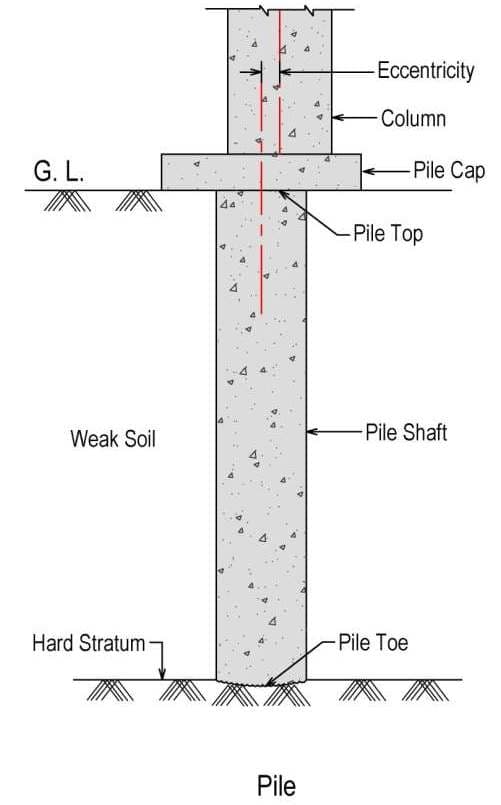
The simple function of the pile is to carry the structural load which cannot be adequately supported by the soil at a certain level, to a depth where the necessary support is available. When a pile passes through soft soils and its tip penetrates a small distance into a hard stratum of good bearing capacity, it is called an end bearing pile. Characteristics of supporting stratum must be such that it is able to carry the load transmitted through pile tip without failing in shear or undergoing excessive settlement.

There are mainly six basic reasons, which may lead to failure of cast-in-situ end bearing piles, they are as follows
6 Major Reasons for Failure of Pile Foundation!
01. The hard stratum such as rock below the pile toe may be defective:
The rock stratum supporting piles must be capable enough to sustain the load transmitted through pile tip without failing in shear and settlement. In such cases, the thin layer of sound rock overlaying unsound or weak rock and deep pits or crevices in the rock surface affect the sound rock.
02. Pile toe or junction of pile toe and rock stratum:
There must be sufficient area of contact between the pile toe and the supporting stratum so that the load from pile can be safely transmitted to the stratum below. Sometimes, construction may end with defective pile toe and/or improper seating of pile toe over the supporting stratum. This condition may lead High order of settlements. In some cases, pile toe concrete surface may be partly in contact with the supporting stratum and subsequently, under the design loads, large intensities of stresses may develop in toe portion concrete which may get crushed and subsequently leading to excessive settlement of a pile.
03. Pile shaft body:
Pile shaft body must behave as a solid column to transfer the load of the superstructure to the supporting stratum. The defects in the cast-in-situ piles may often be due to the consequence of faulty concreting. Sometimes, use of deleterious concrete materials, improper mix designs etc. produce a poor quality of pile body.
04. Behaviour of the junction of the pile top, pile cap and super-structural column:
During construction, more or less, all the piles get eccentrically positioned. The effect of eccentricities is generally more where laid on hard stratum, or casing pipes were removed after concreting of piles, or the depth of piles varied between 10 to 20 m, or during construction. The super-structural frame was found to be tilted and was out of plumb by about 30cms.
05. Chemical aggressiveness of sub-soil water:
Aggressive chemicals such as water soluble chlorides and sulphates, if present in subsoil water in quantity more than the permissible limits, may adversely affect the cast-in-situ concrete and may corrode the reinforcement of the pile body leaving behind a useless pile as far as the function of load transformation from the superstructure to hard stratum is concerned.
06. Negative drag on pile body:
Consolidating recent fills and clayey soils induce progressively a downward drag on the pile body. This negative drag has been a predominant cause of failures of some pile constructed in reclaimed areas.
































